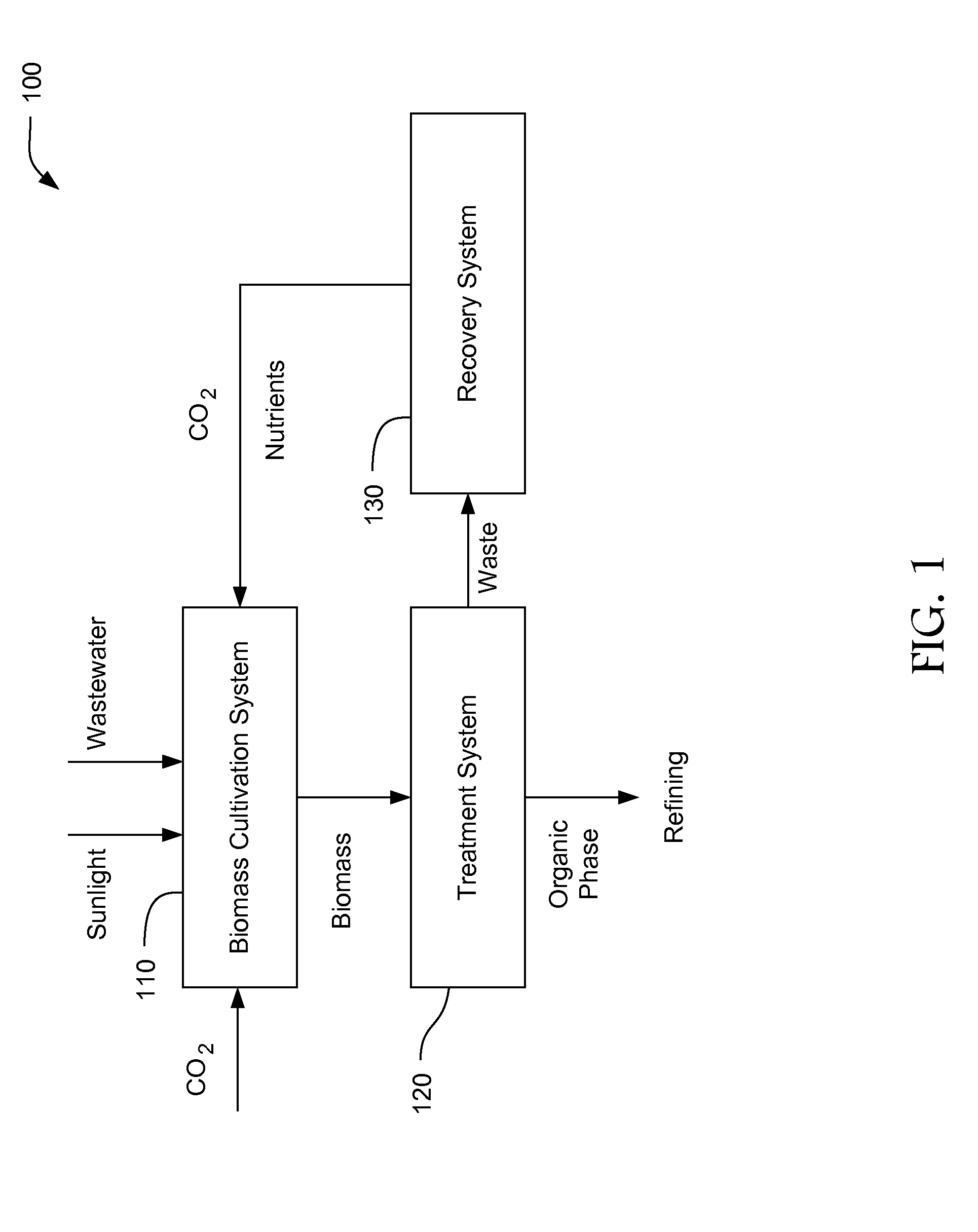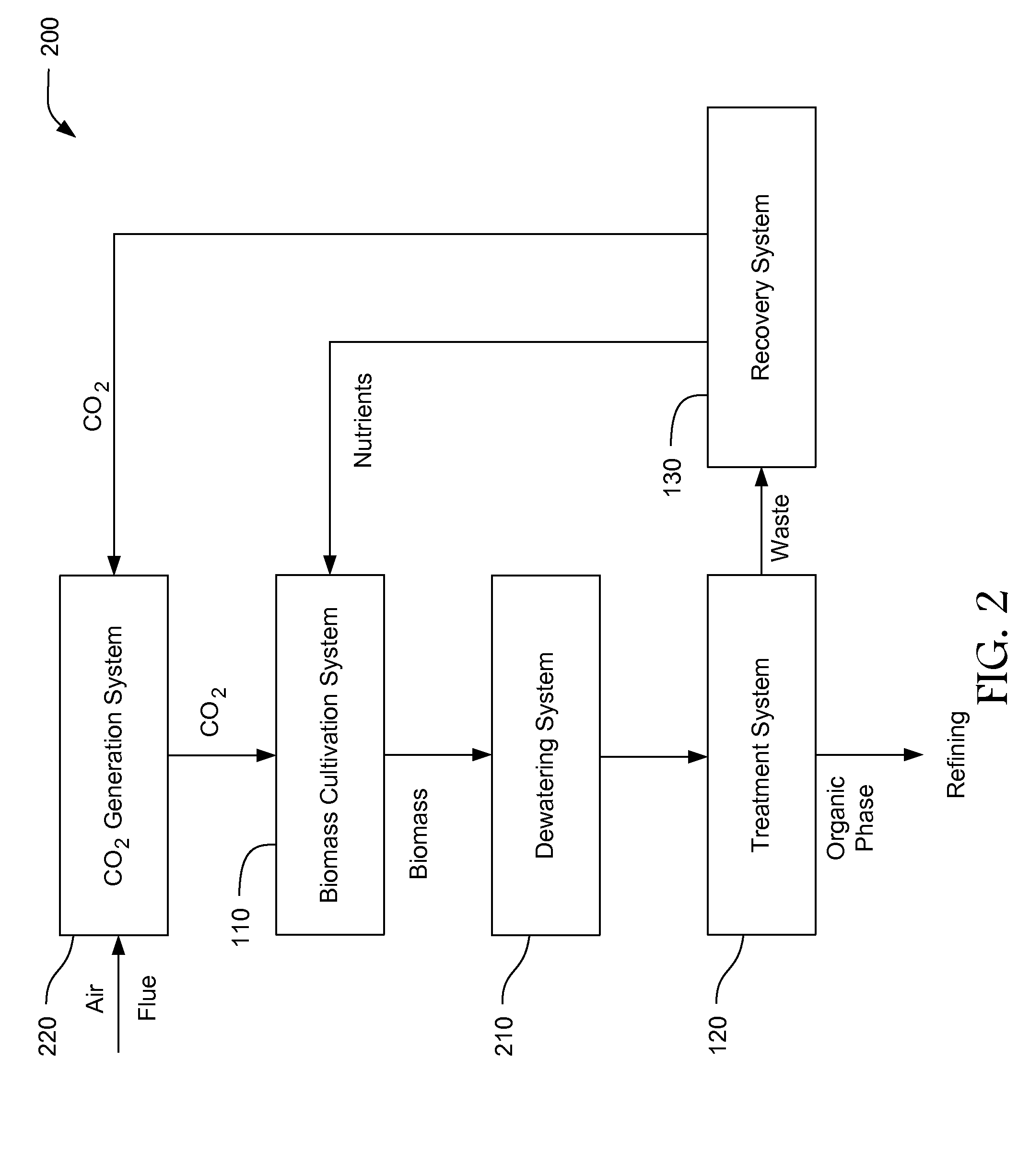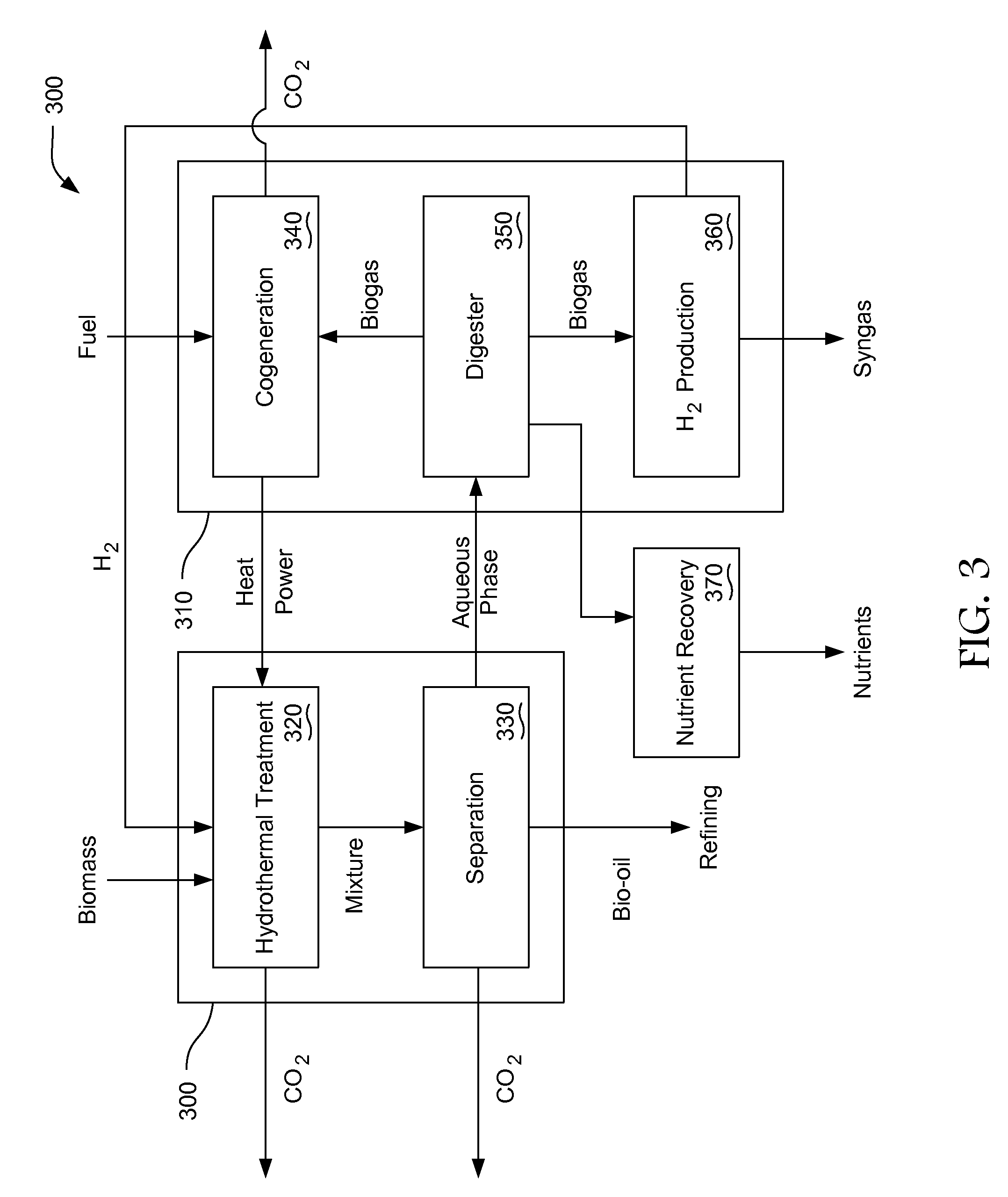Integrated Biorefinery
a biorefinery and integrated technology, applied in the field of renewable energy, can solve the problems of unsuitable bio-oil refining, insufficient carbon efficiency of algal biofuels by hydrothermal liquefaction, and a significant amount of energy to fully dry
- Summary
- Abstract
- Description
- Claims
- Application Information
AI Technical Summary
Benefits of technology
Problems solved by technology
Method used
Image
Examples
Embodiment Construction
[0020]The present invention provides an integrated biorefinery for the production of fuels from biomass. An exemplary biorefinery of the invention integrates biomass cultivation with processing to convert cultivated biomass into a fuel and integrates further with carbon recovery from the biomass processing. The processing of the biomass into fuels begins in a treatment system, such as a hydrothermal treatment system, that produces an organic phase that is suitable for refining to a fuel and also produces a waste stream. The cultivation system can produce algae as the biomass, for example, and in such embodiments the biorefinery can include a dewatering system to remove sufficient water from the biomass to be acceptable to the treatment system. The biorefinery optionally can comprise a refining system to convert the organic phase to the fuel, and the biorefinery optionally can further comprise a cogeneration system configured to use at least some of the fuel produced by the treatment...
PUM
| Property | Measurement | Unit |
|---|---|---|
| temperature | aaaaa | aaaaa |
| temperature | aaaaa | aaaaa |
| Concentration | aaaaa | aaaaa |
Abstract
Description
Claims
Application Information
 Login to View More
Login to View More - R&D
- Intellectual Property
- Life Sciences
- Materials
- Tech Scout
- Unparalleled Data Quality
- Higher Quality Content
- 60% Fewer Hallucinations
Browse by: Latest US Patents, China's latest patents, Technical Efficacy Thesaurus, Application Domain, Technology Topic, Popular Technical Reports.
© 2025 PatSnap. All rights reserved.Legal|Privacy policy|Modern Slavery Act Transparency Statement|Sitemap|About US| Contact US: help@patsnap.com



